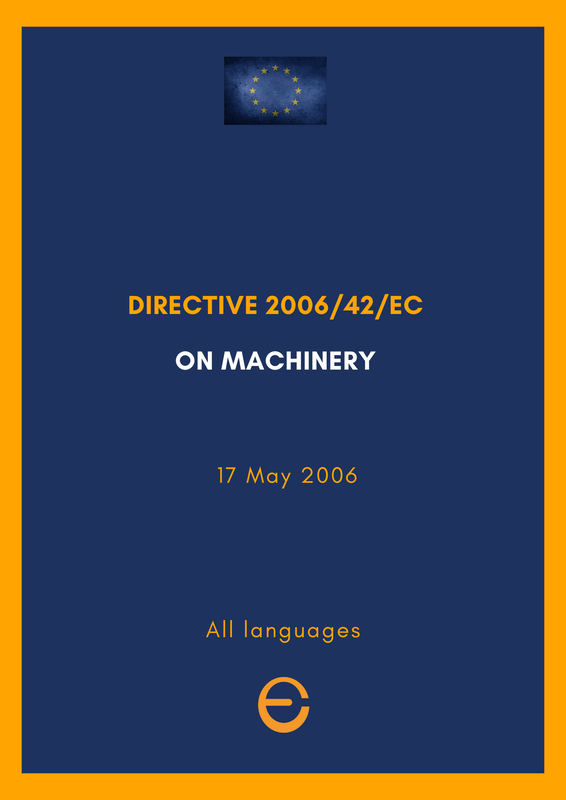Mechanical Engineering
Mobile machinery
Mobile machinery (also known as NRMM: non road mobile machinery), includes a wide range of machinery designed to perform specific operations in off-road environments.
Mobile machinery (also known as NRMM: non road mobile machinery), includes a wide range of machinery designed to perform specific operations in off-road environments, such as:
Occasionally, such machinery would need to travel on the public roads to move from one location to the next one.
- agricultural machinery (e.g. sprayers, combined harvesters, forestry equipment)
- construction machinery (e.g. lifting and handling equipment, earthmoving machinery, mobile cranes, industrial trucks)
- gardening machinery (e.g. lawnmowers)
- municipal machinery (e.g. for street cleaning or snow removal)
Occasionally, such machinery would need to travel on the public roads to move from one location to the next one.
Legislation
|
Directive 2006/42/EC enables machinery that meets European Union health and safety requirements to be moved freely throughout the EU.
This means that workers and the public are well protected when they use or come into contact with machinery. The health and safety requirements are compulsory, but the standards that give presumption of conformity with those requirements, the references of which are published in the Official Journal of the European Union, are voluntary. The UE Directive:
According to the Directive, manufacturers must:
|
- determine what limits there are on using the machinery;
- identify any possible hazards;
- assess the risk of their machinery causing severe injury or damage and take action to make their machinery safer;
- make sure that their machinery complies with the essential health and safety requirements listed in Annex I to the directive;
- provide a technical document confirming that the machinery meets the directive’s requirements;
- make sure that they are applying conformity assessment procedures and that they are making all necessary information available, including instructions for assembly and use;
- check that they have filled in the declaration of conformity and that the CE conformity marking has been put on the machinery so that it can be used anywhere in the EU.
Delegated and implementing acts
Under amending Regulation (EU) 2019/1243, the European Commission is given the power to adopt delegated acts to amend the indicative list of safety components in Annex V to Directive 2006/42/EC.
To ensure uniform conditions for the implementation of Directive 2006/42/EC, the Commission is given powers to introduce necessary measures to deal with potentially hazardous machinery by means of implementing acts. Those powers must be exercised in accordance with Regulation (EU) No 182/2011 (see summary).
The Review of the Directive
The EU is working on a new legislative initiative to harmonise the road circulation safety requirements for mobile machinery (self-propelled and towed).
Many aspects of the machinery sector have been harmonised. However, ‘road safety requirements’ such as lights, brakes, steering, dimensions, etc., are currently regulated at a national level and manufacturers have to comply with requirements which vary between EU countries. This causes administrative burdens and regulatory charges for manufacturers plus possible road safety concerns for the EU countries with more stringent rules.
The European Commission committed to address these problems and improve the functioning of the Internal Market through a new legislative act which will harmonise safety requirements for the road circulation of mobile machinery (self-propelled mobile and towed machinery).
The EU is working on a new legislative initiative to harmonise the road circulation safety requirements for mobile machinery (self-propelled and towed).
Many aspects of the machinery sector have been harmonised. However, ‘road safety requirements’ such as lights, brakes, steering, dimensions, etc., are currently regulated at a national level and manufacturers have to comply with requirements which vary between EU countries. This causes administrative burdens and regulatory charges for manufacturers plus possible road safety concerns for the EU countries with more stringent rules.
The European Commission committed to address these problems and improve the functioning of the Internal Market through a new legislative act which will harmonise safety requirements for the road circulation of mobile machinery (self-propelled mobile and towed machinery).
- Roadmap: mobile machinery road circulation requirements – inception impact assessment
- On 10 November, a public consultation on road circulation requirements for mobile machinery was launched and it was open until 2 February 2021.
- Stakeholder dialogue: the European Commission organised 2 workshops in Brussels on 14 June 2017 and 9 February 2018, respectively
Studies
The Commission is in process of conducting a series of consultation activities with all concerned stakeholders:
- On 10 November, we launched the public consultation on road circulation requirements for mobile machinery and it will stay open until 2 February 2021.
- Stakeholder dialogue: the European Commission organised 2 workshops in Brussels on 14 June 2017 and 9 February 2018, respectively


